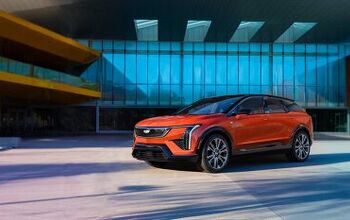Nissan Looks Ready to Bring E-Power to Its American Fleet

There’s no confirmation just yet, but all signs are pointing to the eventual introduction of Nissan’s novel e-Power hybrid system in its U.S. lineup.
We say “novel” because the system isn’t like any gas-electric setup currently on the road. Think of it as a way to cheaply reduce emissions without the worries of limited electric range or the expense of bulky battery packs. Instead, think of the car as a little ship.
Many Western navies field frigates and destroyers with integrated electric propulsion (IEP), meaning a diesel engine or gas turbine acts as a generator to power the ship’s electric motors, with no mechanical connection between the propellers (think drive wheels) and the fossil fuel-burning powerplants.
That’s essentially how Nissan’s e-Power system operates, only with the generator’s juice entering a small battery before reaching the electric motor. Launched in Japan last year in the Versa Note hatchback, the e-Power system uses a 1.2-liter three-cylinder that hums along at 2,500 rpm. There’s no plug-in capability, and the car’s battery is one-twentieth the size of that found in the company’s first-generation Leaf.
However, because electric motors generate maximum torque from a standstill, the Note e-Power isn’t as much of a slouch as other small cars.
Automotive News has now spotted two e-Power Notes — one a U.S. model, the other right-hand drive — plying the roadways of Michigan with two hybrid competitors in tow. Earlier this year, a Nissan executive said e-Power would be a good fit outside of Japan, with the automaker ready to position it alongside more expensive conventional hybrids and electrics.
The selling point of e-Power is as much about price as it is about fuel economy. Sure, it’s not as stingy at the pump as some compact hybrids (Japan rates it at 77 mpg, to the Prius hybrid’s 96 mpg), but its simple method of operation means it can undercut the competition in sticker price. With a new Leaf bowing for 2018, having e-Power at the bottom of the lineup would bolster Nissan’s growing green cred.
[Image: Nissan]

More by Steph Willems
Latest Car Reviews
Read moreLatest Product Reviews
Read moreRecent Comments
- Namesakeone If I were the parent of a teenage daughter, I would want her in an H1 Hummer. It would be big enough to protect her in a crash, too big for her to afford the fuel (and thus keep her home), big enough to intimidate her in a parallel-parking situation (and thus keep her home), and the transmission tunnel would prevent backseat sex.If I were the parent of a teenage son, I would want him to have, for his first wheeled transportation...a ride-on lawnmower. For obvious reasons.
- ToolGuy If I were a teen under the tutelage of one of the B&B, I think it would make perfect sense to jump straight into one of those "forever cars"... see then I could drive it forever and not have to worry about ever replacing it. This plan seems flawless, doesn't it?
- Rover Sig A short cab pickup truck, F150 or C/K-1500 or Ram, preferably a 6 cyl. These have no room for more than one or two passengers (USAA stats show biggest factor in teenage accidents is a vehicle full of kids) and no back seat (common sense tells you what back seats are used for). In a full-size pickup truck, the inevitable teenage accident is more survivable. Second choice would be an old full-size car, but these have all but disappeared from the used car lots. The "cute small car" is a death trap.
- W Conrad Sure every technology has some environmental impact, but those stuck in fossil fuel land are just not seeing the future of EV's makes sense. Rather than making EV's even better, these automakers are sticking with what they know. It will mean their end.
- Add Lightness A simple to fix, strong, 3 pedal car that has been tenderized on every corner.


































Comments
Join the conversation
Spent a few years on diesel electric submarines and am only surprised that it took so long. I have no insight on why gas versus diesel probably $s are involved. I always bring up the "amazing 75mpg car" that you can find in mother earth magazine archives or just google using the words in quotes. The concept is so simple that I did a class project along that line while still in the working world. Have been a Nissan/Toyota fanboi for years. Glad they are both going to be in the mix.
I've wondered for years if this might be the most sensible configuration. The actual hp you use, averaged over time, is pretty low. It just doesn't take that much power to push a car through the atmosphere at a constant speed - maybe 20 hp for a small car at highway speed. So in theory all you need is an engine that can do a little better than that (divided by the conversion efficiency to electricity, maybe 0.9..it's pretty good) to drive a generator, and a battery big enough to help you up slopes and during acceleration. No mechanical connection between engine and wheels, just a simple electric motor and very simple transmission. High efficiency at low cost. And no range anxiety unless, say, you are traversing a mountain range!